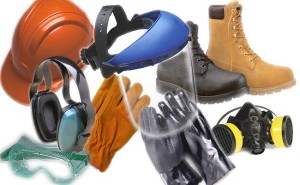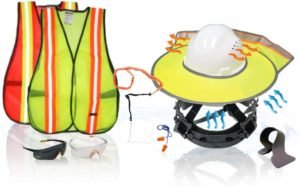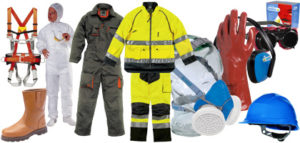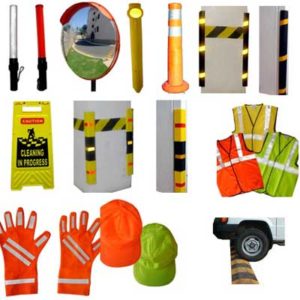Products

PPE Safety Wear in Nigeria by Hiphen Solutions :
Safety Footwear, Boiler Suits, High Visibility Clothing, White Disposable Overalls, Eye Protection, PPE Safety Wear such as Safety Helmets, Ear Defenders, Safety Glasses, Protective Gloves, Face Masks, Fall Arrest Harnesses
When engineering, work practice and administrative controls are not feasible or do not provide sufficient protection, employers must provide personal protective equipment PPE Safety Wear to their employees and ensure its use. Personal protective equipment, commonly referred to as “PPE”, is equipment worn to minimize exposure to a variety of hazards. Examples of PPE include such items as gloves, foot and eye protection, protective hearing devices (earplugs, muffs) hard hats, respirators and full body suits.
The Requirement for PPE
To ensure the greatest possible protection for employees in the workplace, the cooperative efforts of both employers and employees will help in establishing and maintaining a safe and healthful work environment.
In general, employers are responsible for:
- Performing a “hazard assessment” of the workplace to identify and control physical and health hazards.
- Identifying and providing appropriate PPE for employees.
- Training employees in the use and care of the PPE.
- Maintaining PPE, including replacing worn or damaged PPE.
- Periodically reviewing, updating and evaluating the effectiveness of the PPE program.
In general, employees should:
- Properly wear PPE,
- Attend training sessions on PPE,
- Care for, clean and maintain PPE, and
- Inform a supervisor of the need to repair or replace PPE.
The Hazard Assessment
Specific requirements for PPE are presented in many different OSHA standards, published in 29 CFR. Some standards require that employers provide PPE at no cost to the employee while others simply state that the employer must provide PPE. Appendix A at page 40 lists those standards that require the employer to provide PPE and those that require the employer to provide PPE at no cost to the employee.
The hazard assessment should begin with a walk-through survey of the facility to develop a list of potential hazards in the following basic hazard categories:
- Impact,
- Penetration,
- Compression (roll-over),
- Chemical,
- Heat/cold,
- Harmful dust,
- Light (optical) radiation, and
- Biologic.
In addition to noting the basic layout of the facility and reviewing any history of occupational illnesses or injuries, things to look for during the walk-through survey include:
- Sources of electricity.
- Sources of motion such as machines or processes where movement may exist that could result in an impact between personnel and equipment.
- Sources of high temperatures that could result in burns, eye injuries or fire.
- Types of chemicals used in the workplace.
- Sources of harmful dusts.
- Sources of light radiation, such as welding, brazing, cutting, furnaces, heat treating, high intensity lights, etc.
- The potential for falling or dropping objects.
- Sharp objects that could poke, cut, stab or puncture.
- Biologic hazards such as blood or other potentially infected material.
Training Employees in the Proper Use of PPE
Employers are required to train each employee who must use PPE. Employees must be trained to know at least the following:
- When PPE is necessary.
- What PPE is necessary.
- How to properly put on, take off, adjust and wear the PPE.
- The limitations of the PPE.
- Proper care, maintenance, useful life and disposal of PPE.
Tags:
PPE Safety Wear
Personal Protective Equipment
PPE Safety Wear Price
PPE Safety Wear Suppliers
PPE Safety Gear
PPE Safety Kit
PPE Safety Equipment
PPE Safety Shoes
PPE Safety Glasses




